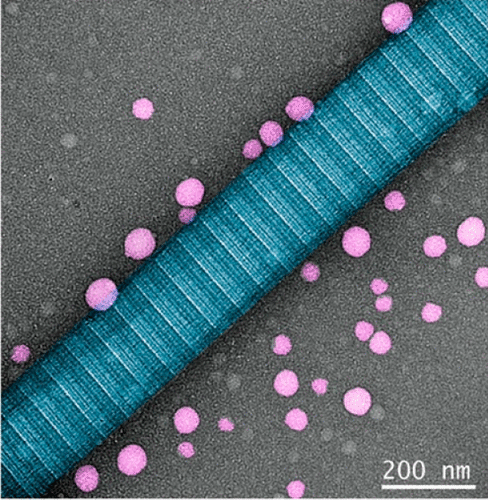当前位置:
X-MOL 学术
›
ACS Biomater. Sci. Eng.
›
论文详情
Our official English website, www.x-mol.net, welcomes your
feedback! (Note: you will need to create a separate account there.)
Enhancing Collagen Mineralization with Amelogenin Peptide: Toward the Restoration of Dentin
ACS Biomaterials Science & Engineering ( IF 5.4 ) Pub Date : 2020-02-21 , DOI: 10.1021/acsbiomaterials.9b01774 Kaushik Mukherjee 1 , Gayathri Visakan 1 , Jin-Ho Phark 2 , Janet Moradian-Oldak 1
ACS Biomaterials Science & Engineering ( IF 5.4 ) Pub Date : 2020-02-21 , DOI: 10.1021/acsbiomaterials.9b01774 Kaushik Mukherjee 1 , Gayathri Visakan 1 , Jin-Ho Phark 2 , Janet Moradian-Oldak 1
Affiliation

|
Mammalian teeth primarily consist of two distinct calcified tissues, enamel and dentin, that are intricately integrated by a complex and critical structure, the dentin-enamel junction (DEJ). Loss of enamel exposes the underlying dentin, increasing the risk of several irreversible dental diseases. This paper highlights the significance of utilizing the functional domains of a major enamel matrix protein, amelogenin, intrinsic to tooth enamel and the DEJ interface, to rationally design smaller bioinspired peptides for regeneration of tooth microstructures. Using this strategy, we designed a synthetic peptide, P26, that demonstrates a remarkable dual mineralization potential to restore incipient enamel decay and mineralization defects localized in peripheral dentin below the DEJ. As a proof of principle, we demonstrate that interaction between P26 and collagen prompts peptide self-assembly, followed by mineralization of collagen fibrils in vitro. P26-mediated nucleation of hydroxyapatite (HAP) crystals on demineralized dentin in situ significantly facilitates the recovery of mineral density and effectively restores the biomechanical properties of dentin to near-native levels, suggesting that P26-based therapy has promising applications for treating diverse mineralized tissue defects in the tooth.
中文翻译:

Amelogenin肽增强胶原蛋白矿化作用:修复牙本质
哺乳动物牙齿主要由两个不同的钙化组织,牙釉质和牙本质组成,它们通过复杂而关键的结构,即牙本质-牙釉质接合处(DEJ)复杂地整合在一起。牙釉质的丧失会暴露出潜在的牙本质,从而增加了几种不可逆的牙齿疾病的风险。本文强调了利用牙釉质固有的主要牙釉质基质蛋白amelogenin的功能结构域和DEJ接口的重要性,合理设计较小的受生物启发的肽以再生牙齿的微结构。使用这种策略,我们设计了一种合成肽P26,该肽显示出显着的双重矿化潜力,可以恢复早期釉质的衰变和DEJ下方周围牙本质中定位的矿化缺陷。作为原理证明,我们证明P26和胶原蛋白之间的相互作用提示肽自组装,然后在体外胶原蛋白纤维矿化。P26介导的去矿质牙本质上羟基磷灰石(HAP)晶体的成核作用显着促进了矿物质密度的恢复,并有效地将牙本质的生物力学特性恢复到接近天然水平,这表明基于P26的疗法在治疗多种矿化组织方面具有广阔的应用前景牙齿缺损。
更新日期:2020-02-21
中文翻译:

Amelogenin肽增强胶原蛋白矿化作用:修复牙本质
哺乳动物牙齿主要由两个不同的钙化组织,牙釉质和牙本质组成,它们通过复杂而关键的结构,即牙本质-牙釉质接合处(DEJ)复杂地整合在一起。牙釉质的丧失会暴露出潜在的牙本质,从而增加了几种不可逆的牙齿疾病的风险。本文强调了利用牙釉质固有的主要牙釉质基质蛋白amelogenin的功能结构域和DEJ接口的重要性,合理设计较小的受生物启发的肽以再生牙齿的微结构。使用这种策略,我们设计了一种合成肽P26,该肽显示出显着的双重矿化潜力,可以恢复早期釉质的衰变和DEJ下方周围牙本质中定位的矿化缺陷。作为原理证明,我们证明P26和胶原蛋白之间的相互作用提示肽自组装,然后在体外胶原蛋白纤维矿化。P26介导的去矿质牙本质上羟基磷灰石(HAP)晶体的成核作用显着促进了矿物质密度的恢复,并有效地将牙本质的生物力学特性恢复到接近天然水平,这表明基于P26的疗法在治疗多种矿化组织方面具有广阔的应用前景牙齿缺损。


















































 京公网安备 11010802027423号
京公网安备 11010802027423号